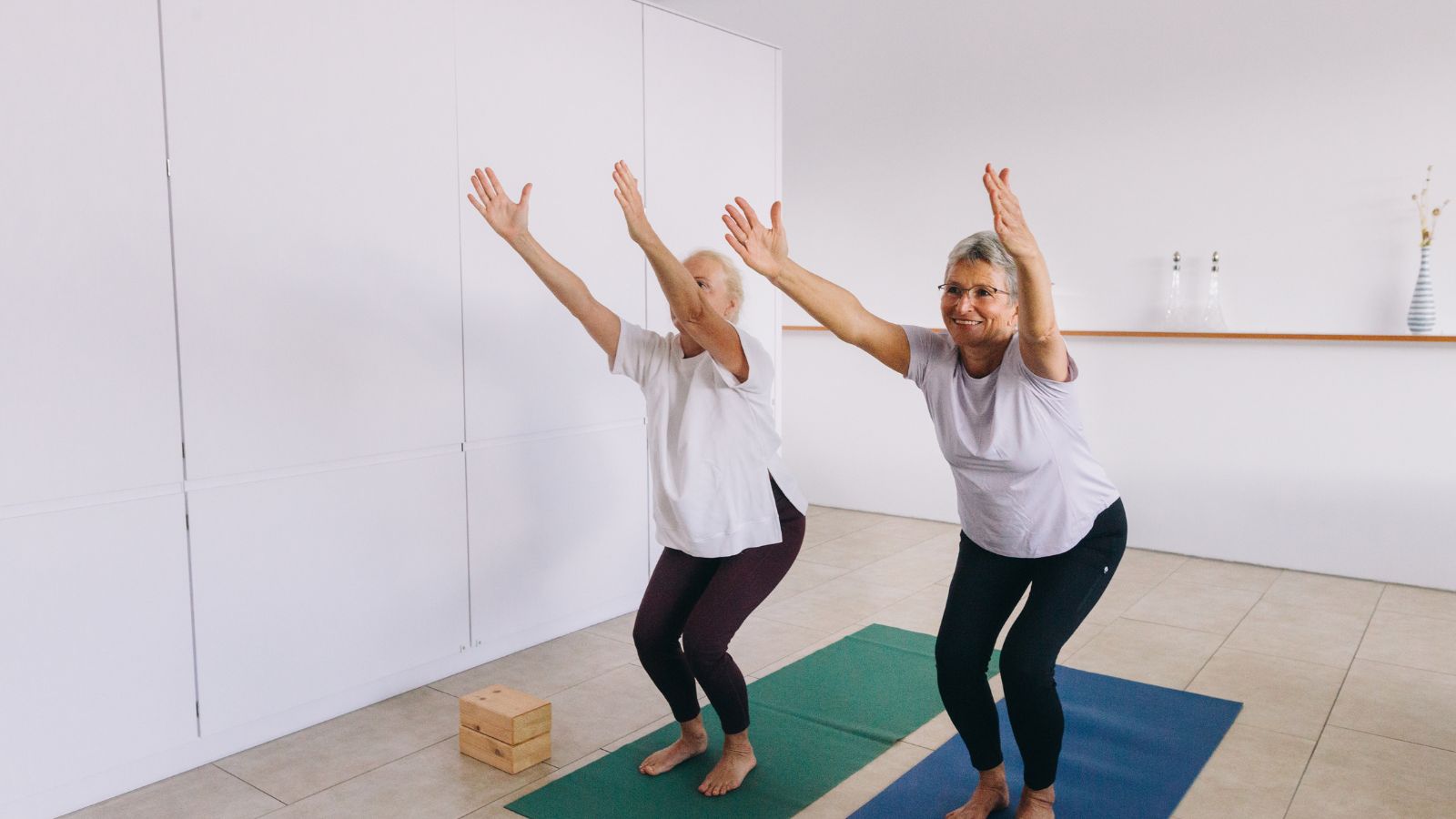As we age, balance and flexibility exercises for seniors become critical to staying independent, mobile, and injury-free. In fact, over 36 million falls are reported among older adults in the U.S. every year—and most are preventable.
The solution? Targeted balance and flexibility exercises for seniors that improve strength, stability, and mobility—without requiring high-impact movements.
Let’s explore the best exercises, the science behind why they work, and how small, consistent efforts can lead to big gains in stability and confidence.
Why Balance and Flexibility Matter for Seniors
As we age, we experience a natural decline in muscle mass, joint range of motion, and proprioception (your body’s sense of position). These declines increase the risk of:
- Falls and fractures
- Joint stiffness and chronic pain
- Difficulty with everyday activities (stairs, reaching, bending)
But here’s the good news: balance and flexibility can be improved at any age with regular, intentional practice.
The Numbers: How Much Should Seniors Exercise?
The CDC recommends older adults engage in:
- 150 minutes of moderate activity per week
- 2+ days of strength training
- Balance and flexibility training 3+ days per week
Just 15–20 minutes per session is enough to see measurable improvements over 6–8 weeks.
Best Balance and Flexibility Exercises for Seniors
1. Heel-to-Toe Walk
- Walk in a straight line placing the heel of one foot directly in front of the toe of the other.
- Do for 10–20 steps.
✅ Improves coordination and gait stability.
2. Single-Leg Stand (with support)
- Stand near a chair and lift one foot off the floor for 10–30 seconds.
- Switch sides.
✅ Builds ankle and core stability.
3. Wall Angels
- Stand against a wall with arms raised like a goal post. Slowly move arms up and down.
✅ Improves shoulder mobility and posture.
4. Seated Hamstring Stretch
- Sit on the edge of a chair, extend one leg forward, and reach toward your toes.
✅ Enhances flexibility in the posterior chain (back of legs).
5. Tai Chi or Gentle Yoga
- Combines slow movements, breathing, and balance work.
✅ Low-impact, full-body control and joint mobility booster.
Safety Tips for Seniors
- Always use a chair, counter, or wall for support during balance work.
- Wear supportive, non-slip footwear.
- Warm up with 2–3 minutes of light marching or arm circles.
- Never force a stretch—aim for mild tension, not pain.
If there’s a history of falls or vertigo, consider consulting a physical therapist before starting any routine.
How to Build a Weekly Routine
Here’s a simple 3-day plan using balance and flexibility exercises:
Day 1:
- Heel-to-Toe Walk (3 sets)
- Seated Hamstring Stretch (2 rounds)
Day 2:
- Single-Leg Stand (3 sets each leg)
- Wall Angels (3 sets of 10 reps)
Day 3:
- Gentle yoga or Tai Chi video (15–20 minutes)
Track your hold times, reps, or ease of motion over time to measure progress—because even flexibility has math behind it.
Key Takeaways
- Balance and flexibility exercises for seniors reduce fall risk, improve mobility, and enhance quality of life.
- Focus on simple, consistent movements that restore range of motion and stability.
- Progress can be seen in as little as 2–3 weeks with proper frequency and attention.
“Aging is inevitable—but frailty is not. Strength comes from movement, and confidence comes from knowing your body is ready to handle life’s every step.”
Read Next…
- How a Beard and Mustache Work Like Makeup
- How Swimming Can Help Improve Your Mental Health
- Are You Wasting Money on Supplements?
- 4 Benefits of Celebrating Small Wins in Your Fitness Journey
- Can You Use 5-Hour Energy for Workouts?
Join the Faith & Fitness Family
Subscribe now and get exclusive access to Bible-based fitness content and more!
Bonus: iPhone users get a 14-day free trial of our Faith & Fit workout app!
📩 Important: Please confirm your subscription within 7 days. Unconfirmed emails will be removed to help prevent spam and ensure we only send content to those who want it.
👉 Stay strong in faith and fitness — subscribe today!






